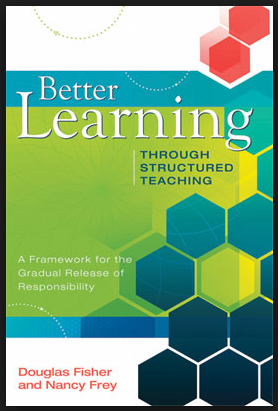In the 21st century, education is connected to our goals for the 21st century learner. While past traditions for student learning focused significantly on remembering facts, modern educational outcomes elevate the 21st century skills of
critical thinking and reasoning and
information literacy. Today's students live in a world where information is a keystroke away, so today's 21st century learner is assessed on
how they use information and resources. Factual information is not the "end;" factual information becomes something that the learner uses to achieve different ends. Below, notice how the last two report card descriptors communicate modern learning, implying that students use factual information rather than just repeat it. In Jeffco, our elementary report card descriptors include:
Let's crack open these descriptors to consider what they mean, and their implications for teaching and learning.
Report Card Descriptor:
Demonstrates understanding of social studies concepts and content.
When teachers use planning tools, they see broader conceptual ideas for a unit of study (students will understand that). These broader understandings are, in general, written with the teacher as the audience. The concepts we want students to understand are complex; they're not tackled in a lesson or two. To understand takes time. When considering constructivist, inquiry-based models of learning, teachers utilize essential questions with students. Essential questions are written with students as the audience. Essential questions are broad and they allow students to use factual information to uncover what we, as teachers, hope they will understand over time. Throughout a unit of study, teachers might revisit essential questions with students, allowing them to write about the essential questions and discuss the essential questions. When new factual information is acquired, students connect their ideas with broader, more enduring concepts. With regular acquisition of new factual information, a student gains additional information, which allows the learner to incorporate more complex insight into an essential question. Teachers are asked to assess how well a student demonstrates understanding of social studies concepts and content, so we must ask ourselves, "What work or assessment activity will allow me, the teacher, to see how a student is connect factual information to broader conceptual ideas?" While educational traditions often land on the notion that teachers "grade every assignment," 21st century perspectives of teaching and learning elevate the use of formative assessment so teachers are monitoring how students are making progress towards the use of content to explain concepts. Throughout a unit of study teachers have the opportunity 1) to model the thinking needed to make sense of essential questions, 2) to formatively assess student thinking, and 3) to offer feedback to students related to their progress, which includes correcting misconceptions.
Report Card Descriptor:
Applies skills and processes of social studies effectively.
When teachers use planning tools, they see learning goals that identify what
students will be able to do. At times, these statements reflect domain specific skills and processes such as
students will be able to:
- analyze primary and secondary sources (History)
- analyze maps and geographic sources (Geography)
- ask geographic questions (Geography)
- evaluate and make choices while considering variable such as incentives, opportunity cost, and risk (Economics)
Teachers might also notice statements that ask students to use content knowledge (
students will know) in a way that reflects thinking skills or processes of a historian, geographer, economist or citizen/political scientist. This is also known as using the skills and processes of the practitioner.
* * * * * * * * * * * * *
In both situations, modeling the different types of thinking is crucial. As you model your thinking for students, you might find some of the following phrases will support students:
- When I try to connect these facts to broader
concepts/essential questions, this is how I think.
- As a geographer, this is how I think.
- As a historian, this is how I think.
Teachers will also find it helpful to plan learning activities with a particular goal in mind. Articulate these goals to students so they sense if you are looking at their application of skills and processes or if they are demonstrating understanding of concepts and content. Many times, a teacher can gather information from an activity that will reveal insight related to both report card descriptors; when planning, making an intentional choice about why students are doing the work they're doing will allow you, the teacher, to maintain your focus.
On a final note, if you are struggling to make sense of this thinking within school subjects, try thinking about it in an entirely different context. For example:
1. What are the skills and processes of a psychologist? What content and concepts must a psychologist understand?
2. What are the skills and processes of being a cook? What content and concepts must a cook understand?
3. What are the skills and processes of a soccer player? What concepts must a soccer player understand?




